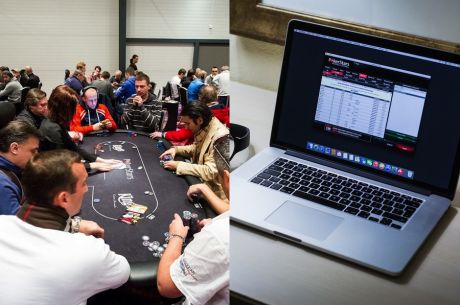3 Rules For Maximizing Your Success in Loose Low Stakes Cash Games

Often these days we spend too much time trying to figure out how to achieve a small win rate in tight, aggressive low stakes cash games. I personally try to avoid these games at all costs.
I don’t know about you, but I didn’t get involved in poker to battle for small amounts of money with people who take the game seriously. I got involved with poker to go get the easy money from recreational players. The truth is most live low stakes games and even low stakes cash games on smaller online sites still have plenty of loose action.
However, many people today make a few key errors which hurt their win rate in these games. In this article I am going to discuss three rules for maximizing your success in loose low stakes cash games.
1. Play a Lot of Hands Versus the Recreational Players
Many people do not maximize their win rate versus the bad players because they simply fold too much preflop. You should be going out of your way to get involved in pots with them. If you have position on the rec player, I would suggest playing as much as the top 50% of hands against them.
This means that when they do their limp thing, you raise it up with a huge range of hands in order to try and get heads up against them going to the flop. This is also known as “isolating.”
A lot of people are afraid that if they don’t have a good hand themselves, they won’t know what to do after the flop. The truth is that these recreational players are playing a huge amount of hands as well. And since you have a position on a player who often will make colossal mistakes after the flop, you could very easily win a big pot with a hand like 10x8x-suited or even 8x5x-suited.
The bottom line is that you can’t win big against these players if you don’t get involved against them. There is also a process at work here of getting in their head and developing a dynamic with them. This will pay off later when you finally have the big hand.
2. Don’t Slow Play Versus Loose-Passive Players
Another rule for success against this category of players is never to slow play versus them. A lot of people make the mistake of not wanting to scare their opponent off by betting too much. But the truth is we call these players “passive” for a reason. They are not going to build the pot for you. If you choose to try and trap them with your big hands, then you can often look forward to winning a tiny pot.
You have to build the pot versus passive players. It is true that they will fold sometimes, but that is just because they didn’t have anything. You can’t force somebody to call you if they have nothing.
The vast majority of the time a big pot gets played in hold’em, it is because both players involved have good hands. This is just a simple fact of the game and it is not something that is under your control.
However, making them pay when they do happen to have something is under your control. Save the trapping for the aggressive regulars who might actually help build the pot for you.
3. Don’t Bluff the Bad Players (Most of the Time)
Another common piece of advice for low stakes cash games is never to bluff the bad players. Again, this isn’t quite optimal. I certainly agree that running big bluffs against them is often a recipe for disaster. However, you definitely should be betting frequently with nothing against them, especially on the flop.
As I said before, you should be isolating these recreational players with a wide range preflop. And you should also be following this up with a continuation bet on the flop most of the time. This is how you start building that dynamic with them I was talking about before.
They are only going to have a pair on the flop about one-third of the time when they do their limp/call thing. Therefore, more often than not they will have to face another bet when they have nothing.
When you are constantly isolating them with a wide range and sticking the c-bet in their face each time, they will start to view you as abusing them. This will pay big dividends for you in the future when you finally make your big hand and they have some piece of the board as well.
The great thing about this strategy is that it doesn’t cost you much either. If they call you on the flop and you still have ten-high on the turn, then yes, you should give up. But most of the time, under normal conditions, you will be taking down a majority of these pots on an earlier street. You are also prepping them for the big blow-up hand where they give you their entire stack.
Final Thoughts
The biggest keys to success for loose low stakes cash games all have to do with keeping things simple — and I mean brutally simple. Do not get tricky in any way. When you make a big hand, you need to bet big on every street for value.
But furthermore, make sure that you are constantly playing this annoying style of “small ball” (as some might call it) against the recreational players. Try to get involved in as many hands as possible versus them and be aggressive consistently on the flop no matter what you have.
You have to remember that sometimes it simply won’t be your day. You won’t be able to make a hand to save your life and they will seem to hit the flop every time in some way. It is really important not to lose your cool during these sessions and simply trust in the process.
This is because on most days this loose-aggressive style of play in position versus the recreational players will pay off in a big way. This approach also tilts them very easily if you are running good or even just normally. This can lead to a windfall situation where they are just handing you stack after stack.
Nathan “BlackRain79” Williams is the author of the popular micro stakes strategy books, Crushing the Microstakes and Modern Small Stakes. He also blogs regularly about all things related to the micros over at www.blackrain79.com.
Get all the latest PokerNews updates on your social media outlets. Follow us on Twitter and find us on both Facebook and Google+!









